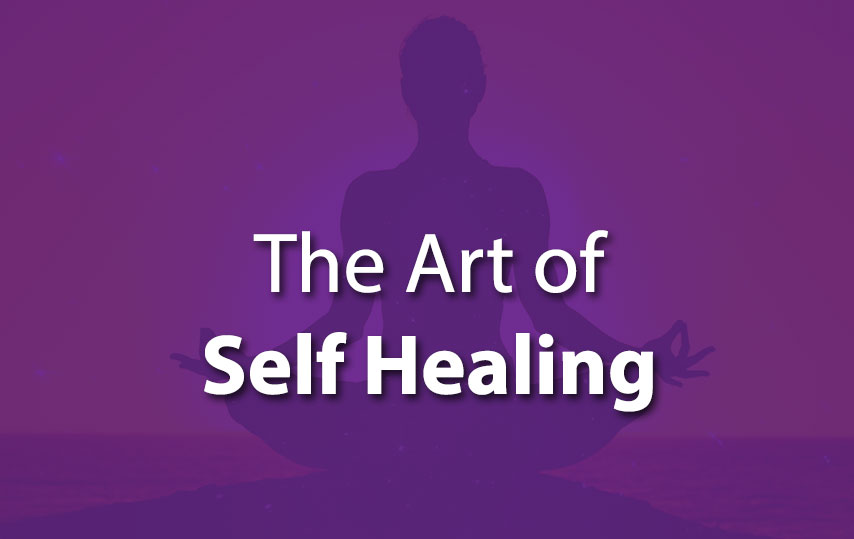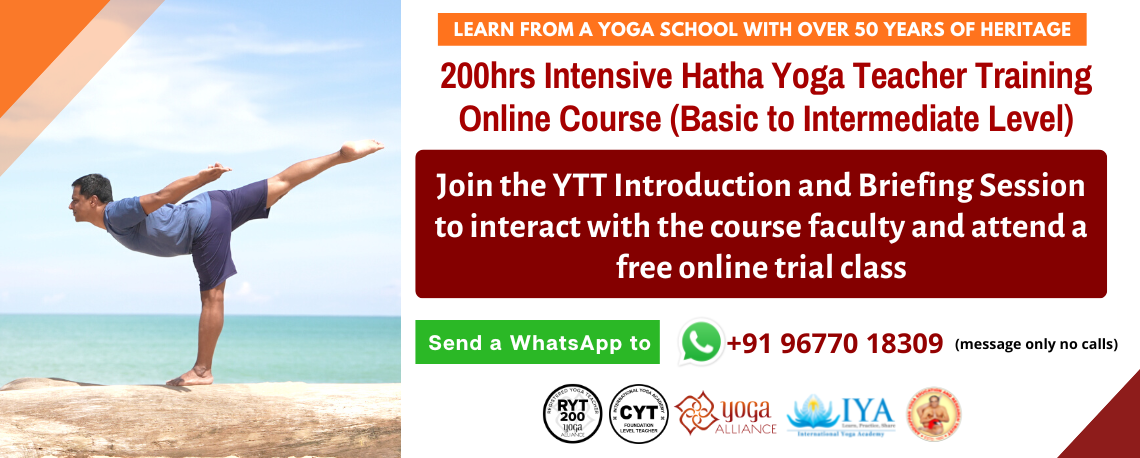The Practice
Asana: What is self healing? Do you have to continue the practice to maintain the power?
Rudra: Our first response when we encounter physical, emotional or mental problems in our lives is to seek external help from a physician or healer. This is a necessary first step especially for serious ailments. However, such external healing does not eradicate the root cause of the problems but only treat the symptoms. The external factors act as harmful agents but are only instrumental and the root cause is always the unfolding of bad karma. It is the universal Law of Karma that is at the root of our unhappiness and suffering. Since our karma is the result of our individual actions in this and past lives, it is not possible for another person to remove the bad karma or its results. The Law of Karma requires that we must make our own effort to remove the bad karma. The self healing techniques are formulated to require some effort, that is, our own action, whether in breathing, mental repetition of healing sounds or visualisations and the ones that I teach are working on the energetic or chakra system which regulates the health of the body.
There are self healing techniques which are for specific issues and only need to be performed for a limited amount of time until healing occurs. There are other self healing techniques which are general and preventive in nature and can be performed for a period of several weeks once every year.
Asana: How did you choose your practice and get trained as an Acharya? What has been the journey, in particular, the most challenging aspects?
Rudra: The most challenging aspect of my spiritual journey is to live a spiritual life in a material world, to maintain a spiritual practice while carrying on a career in technology and having a satisfying family life. I started my spiritual journey more than forty-five years ago and for about the first fifteen years tried out a variety of paths until finally finding one called Kriya Yoga about thirty years ago that satisfied my personal needs and aspirations
It was not my plan to become an acharya. However, as one progresses on the spiritual path, one’s spiritual Master may call upon one to share his or her experience and teaching to others and that’s how the acharya path was set for me. The acharya path is an extension of universal compassion.
Asana: What has been the most transformative experience you had?
Rudra: The experience of still mind, total bliss and a holistic higher consciousness together with the realisation that such an experience is possible for everyone has transformed my approach to the world and to fellow beings.
The Teaching
Asana: How can one discover the power of self-healing? How do you help students to explore the techniques?
Rudra: Even one session of learning and practising the self healing techniques will bring about some changes and can be experienced. Self healing techniques are primarily techniques that harness life-force energy and I help students to feel the energy and so have confidence in their ability to heal themselves.
Asana: Why have you chosen to live in San Francisco? What is the yoga community like in the Bay area? Rudra: I went to school in Berkeley in the early 1970’s and then subsequently went to work in the San Francisco Bay area. This is an area that has always been in the forefront of spiritual and social movements.
Asana: Having travelled extensively around the world conducting workshops, do you find cultural differences affect the ability of selfhealing? Rudra: Self healing is an innate ability of all human beings – it is at the root of all healing, even external healing and therefore we have the so-called placebo effect that people who only think that they are taking a medicine actually get healed just as those who are actually taking the medicine. Cultural differences can affect the belief system and can cause a barrier to self healing. However, I find that those who are openminded enough to come to a self healing workshop have a readiness to overcome cultural and social prejudices.
The Life Style
Asana: Do you always maintain a positive attitude? Are you always happy? How do you protect yourself against negative emotions? Would it be fine to go through any emotions, then let go?
Rudra: The spiritual path of Kriya Yoga and its practices burn away all karma and remove the barriers that prevent us from recognising our true Nature which is bliss. It is not possible to always maintain a positive attitude or be happy all the time if one is still identified and attached to the body or mind. Only when one can attain a consciousness of one’s true Self, then there is no mind to get in the way of one’s bliss.
Asana: How often do you have to self heal? Do you influence people around you into self healing? Do you have to maintain a certain life style in order to self heal more effectively?
Rudra: It is not possible to generalise on the frequency or need for self healing because we have all come into this world with different sets of karmas, positive and negative. Those of us who are on the spiritual path for a long time may have a positive influence on those around us and can help in the self healing process. Life-style changes may be necessary depending on the specific physical, emotional or mental problem.
The Way Forward
Asana: What is the next project you wish to pursue? Where and why would you wish to conduct your next workshop? How would you wish to promote self healing further and the practice of awareness and transformation?
Rudra: I’m constantly experimenting with different modes of teaching the updated methods of the ancient yogis of India. The primary purpose is to raise the consciousness of as many people as possible who are willing to make a leap in their spiritual evolution. My next workshops are in Singapore and Kuala Lumpur.















 Rudra Shivananda is a student and teacher of yoga of more than 30 years. A disciple of the Himalayan Grand Master Yogiraj Siddhanath, he has been trained as an Acharya or Spiritual Precepter in the Indian Nath tradition, which is closely associated with the Siddha tradition. He teaches that the only lasting way to happiness is by a consistent practice of awareness and transformation. During Rudra’s Hong Kong visit, Asana interview him on his practice.
Rudra Shivananda is a student and teacher of yoga of more than 30 years. A disciple of the Himalayan Grand Master Yogiraj Siddhanath, he has been trained as an Acharya or Spiritual Precepter in the Indian Nath tradition, which is closely associated with the Siddha tradition. He teaches that the only lasting way to happiness is by a consistent practice of awareness and transformation. During Rudra’s Hong Kong visit, Asana interview him on his practice.


 Other
Other